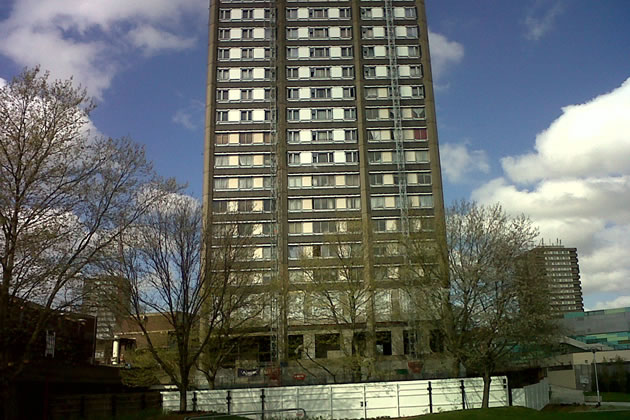Cladding Nightmare Continues for Thousands of Londoners
Government promises more support soon for affected homeowners

Grenfell Tower before the fire. Picture: Published with kind permission
“It is all consuming and it is constantly playing on your mind,” said a Fulham resident campaigning to get potentially dangerous cladding removed from homes throughout the UK.
“What I would really like to do is leave my little flat and crack on. It’s a strain. It’s the first thing when you wake up. There’s no escape from it.”
He usually works from home and said it was stressful worrying about fire safety despite having a waking watch at his building.
His comments came after a Labour motion calling for an immediate upfront fund to remove dangerous cladding from homes and new laws to stop leaseholders having to foot the bill for remedial action, was passed in Parliament. It got 263 votes with 363 abstentions.
The Conservative leadership asked its MPs to abstain, allowing the motion passed unopposed but the result is not binding on the government.
Speaking earlier in the day, Labour leader Sir Keir Starmer accused ministers of offering "half-baked solutions" and called for a national cladding taskforce
The Government has previously offered loans for leaseholders to help pay to remove cladding. Housing Minister Chris Pincher has promised that the government would announce a new financial package "very shortly".
It is estimated that two to three million people could be living in homes with dangerous cladding throughout the UK, including thousands in London.
The Government’s £1.6bn Building Safety Programme is funding the removal of dangerous cladding from blocks over storeys 18 high.
And the London Fire Brigade said 590 high-rise residential blocks in the capital had a waking watch in mid-December.
The Government announced a £30m waking watch relief fund in December to replace waking watch with fire alarm systems.
However as the resident lives in a low-rise building he would not qualify for a loan to pay to remove aluminium combustible material cladding (ACM).
But he said, “There are hundreds of people staring into the financial abyss.”
He added, “They are moving incredibly slowly, over three-and-a-half years after Grenfell. Glaciers move faster.”
“It’s bigger than PPI. It’s the sort of thing that the more you look at it the more it’s kind of unravelling.”
In the London Assembly report into London’s cladding crisis, fire resilience and emergency planning chairman Andrew Dismore said, “There is a lot of anger and anxiety amongst Londoners whose homes are impacted by cladding. Londoners are either stuck in homes that are unsafe due to cladding or they are stuck in homes that are no longer suitable for their families.”
Fire safety campaigner Baz Jafar from Enfield, said, “It seems to me that the Government does not have any sense of urgency for what they are doing.”
He called for the Government to pick up the bill to put fire safety issues right, rather than asking residents to pay costs which can reach thousands.
“We are talking about the first rung on the housing ladder. People can’t move, entire chains are collapsing.”
He added the impact on people has been catastrophic.
“There are people who have lost their job, people who have got divorced and can’t move on with their lives.”
He added, “It is very difficult and compounded by the pandemic because people are sitting inside their homes which they are told are unsafe.”
He said he felt it was unfair to ask residents caught up in the cladding crisis throughout the UK to have to pay to put it right.
“You would not expect to walk into a car showroom and buy a car and then a few years later you are told the car is unsafe and you have to pay.”
According to the latest government data 90 per cent – or 417 – of all high- rise and publicly owned buildings have either completed or started work to remove ACM.
And work has started at 82 per cent of private sector buildings – with ACM cladding taken off 42 per cent of them.
Joe Talora - Local Democracy Reporter
February 4, 2021